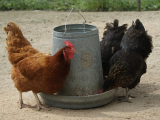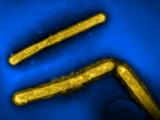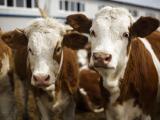The second wave of H7N9 avian flu cases in China has mainly subsided and will be known not only for its markedly higher case total, but also because it lasted longer than the first wave and affected a much larger geographic area, according to a new report from Hong Kong health officials.
Cases slowed to a trickle in May, then dropped off even more after that, suggesting that disease activity has ebbed during late spring, according to a report from the Centre for Health Protection (CHP), which gets its data on the outbreak from mainland health officials.
Over the past 4 weeks only 12 new cases were reported—about 3 per week—compared with 32 to 45 cases a week during the second wave's peak in late January. The last reported case onset was May 22 in a patient from Jiangsu province.
Lowered alert level
A steady downturn in cases prompted CHP officials yesterday to lower Hong Kong's H7N9 alert level from "serious" to "alert."
In a video announcement posted yesterday, Ko Wing-man, MBBS, Hong Kong's secretary for food and health said the decision was based on no new H7N9 cases detected in Hong Kong over the past 2 months and a reduced spread of the disease in the region. He said, however, that the CHP would remain vigilant and in contact with the World Health Organization (WHO) in case its outbreak management plan needs to be updated.
Overall, 448 illnesses have been reported, along with at least 157 deaths, according to the CHP. That number is just 1 fewer than a human case series maintained by FluTrackers, an infectious disease news message board that has painstakingly compiled, translated, and posted provincial health department case announcements throughout the H7N9 outbreak, which started last spring.
FluTrackers' total includes an asymptomatic child reported from Beijing during the outbreak's first wave.
The CHP put the number of illnesses in the second wave at 313, with 133 for the first wave.
The number of deaths has been difficult to assess, because some of the patients had severe illnesses, had lengthy hospitalizations, and their outcomes weren't always known or reported.
Geographic spread, poultry contact
During the second wave, H7N9 cases were reported from a much wider geographic area, the CHP said. During the first wave, 10 provinces or cities in the mainland, plus Taiwan, reported cases. However, during the second wave 13 provinces or cities reported cases, along with Hong Kong, Taiwan, and Malaysia.
Though age and gender patterns were similar for the two waves, with a lean toward men and middle-aged and older people, the case fatality rate during the second wave was somewhat higher than in the first: 36% compared with 32%.
About 80% of H7N9 cases had contact with poultry, according to the WHO, and the number of case clusters appears similar over the two waves. "Information to date suggests that the H7N9 virus does not transmit easily from human to human, and does not support sustained human-to-human transmission," the CHP said.
Given that the virus continues to be detected in poultry and their environments, more sporadic human infections are likely to occur, the agency said. And, as with other avian flu viruses, H7N9 may remain at low levels in China over the summer, then spike again in the winter.
See also:
Jun 12 CHP H7N9 lowered alert announcement
CHP Communicable Diseases Watch issue for the week ending Jun 7
FluTrackers H7N9 case list





















